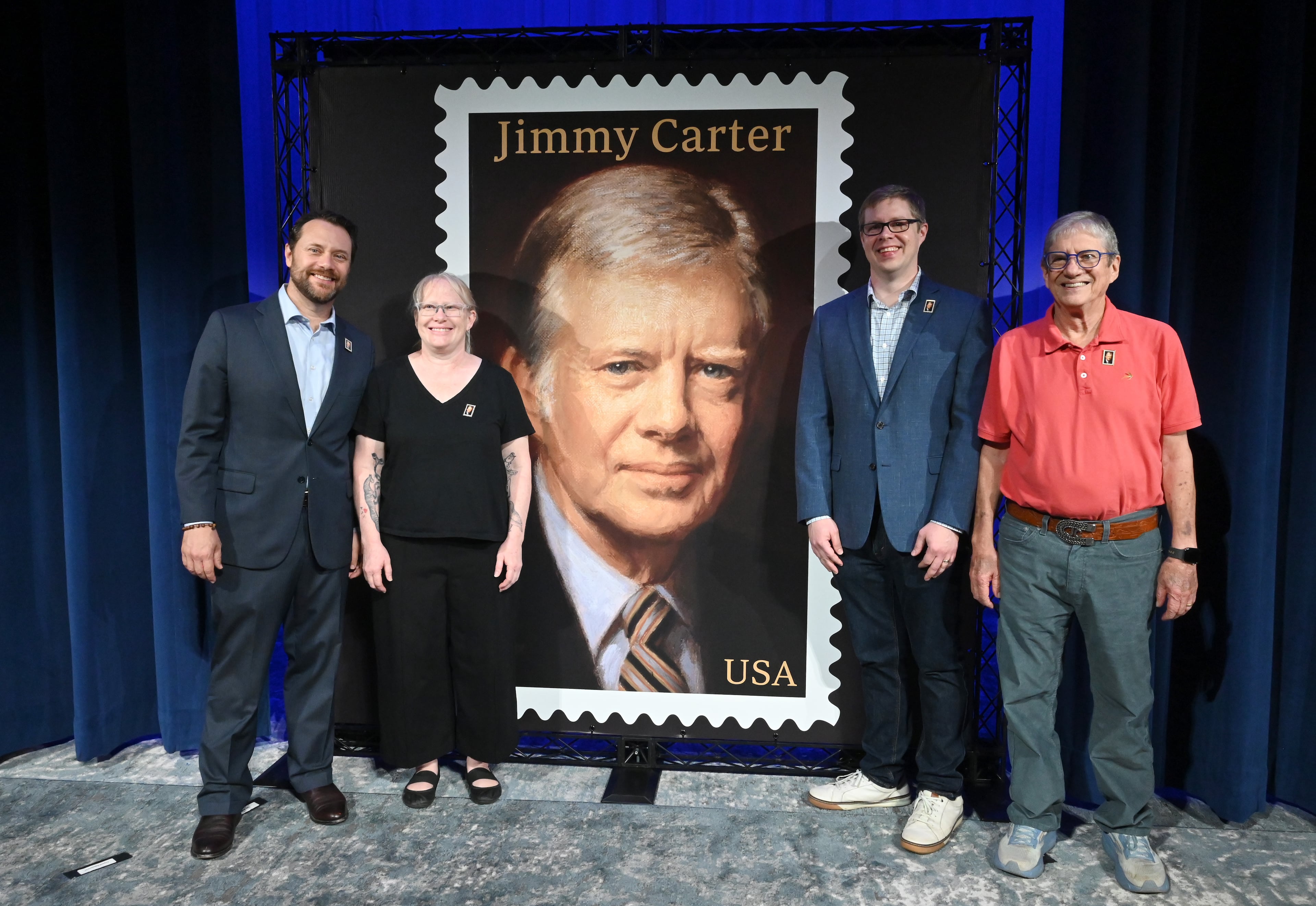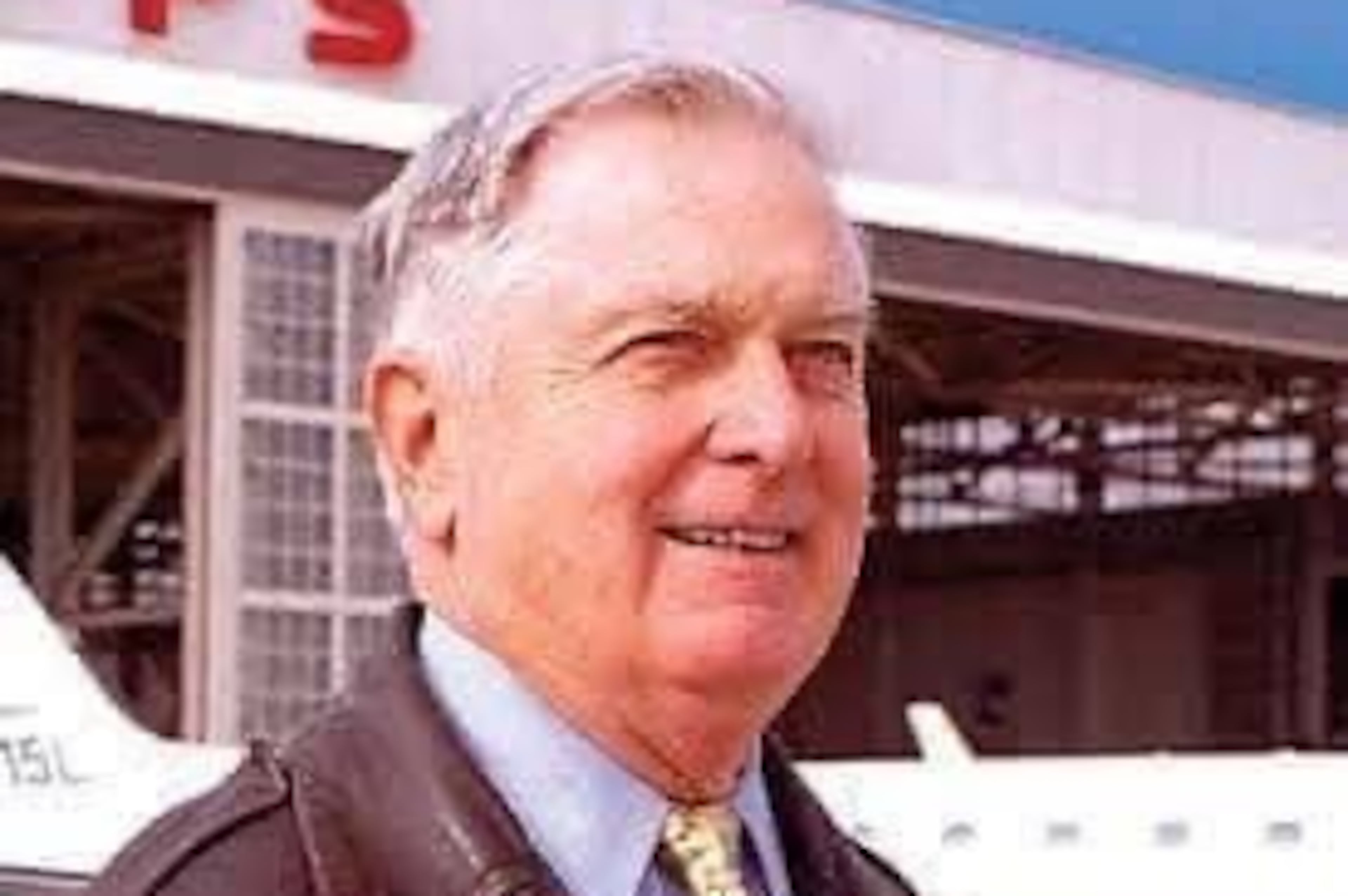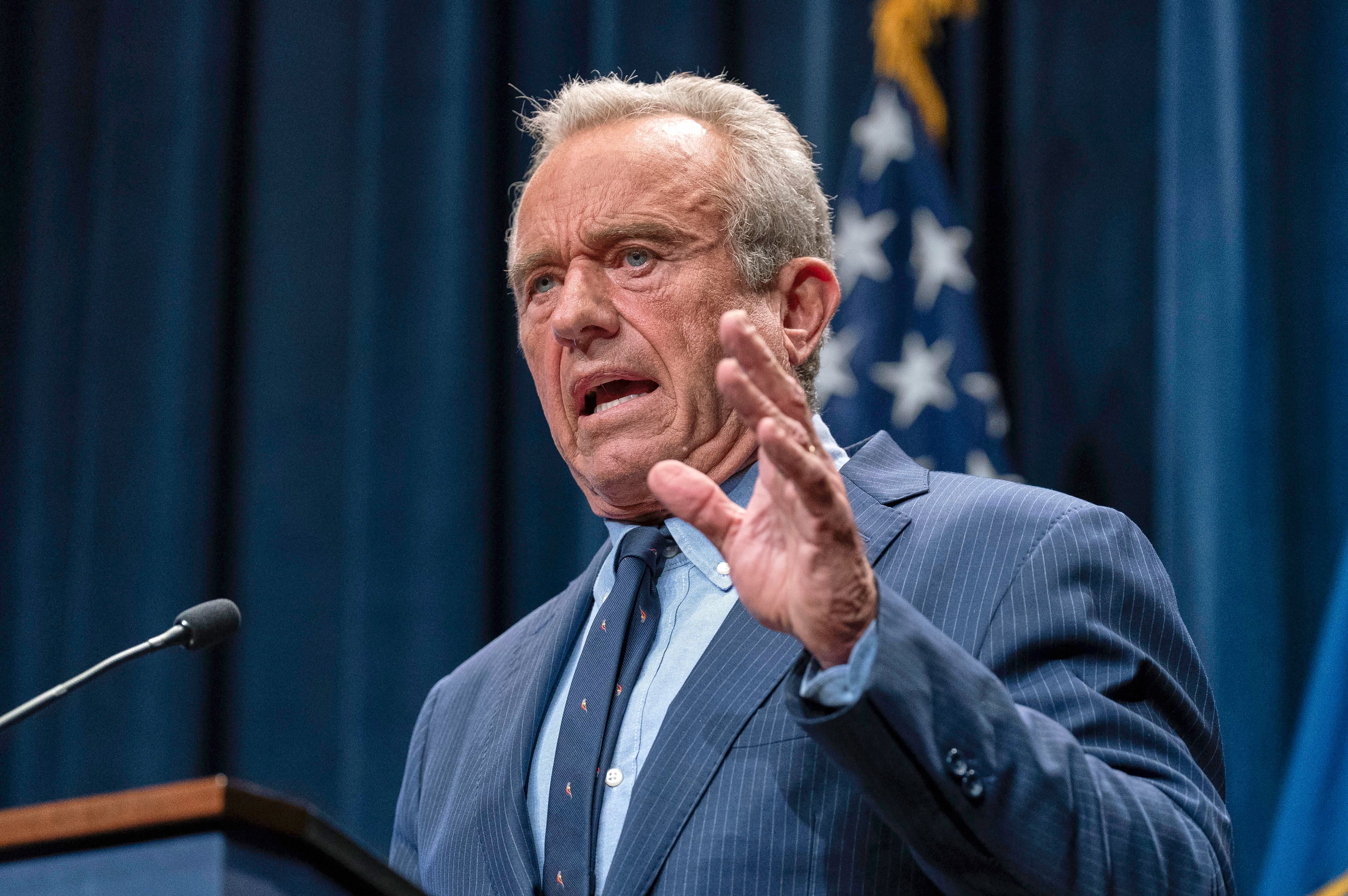On Jimmy Carter’s 101st birthday, a ‘forever’ stamp and a worm in a jar
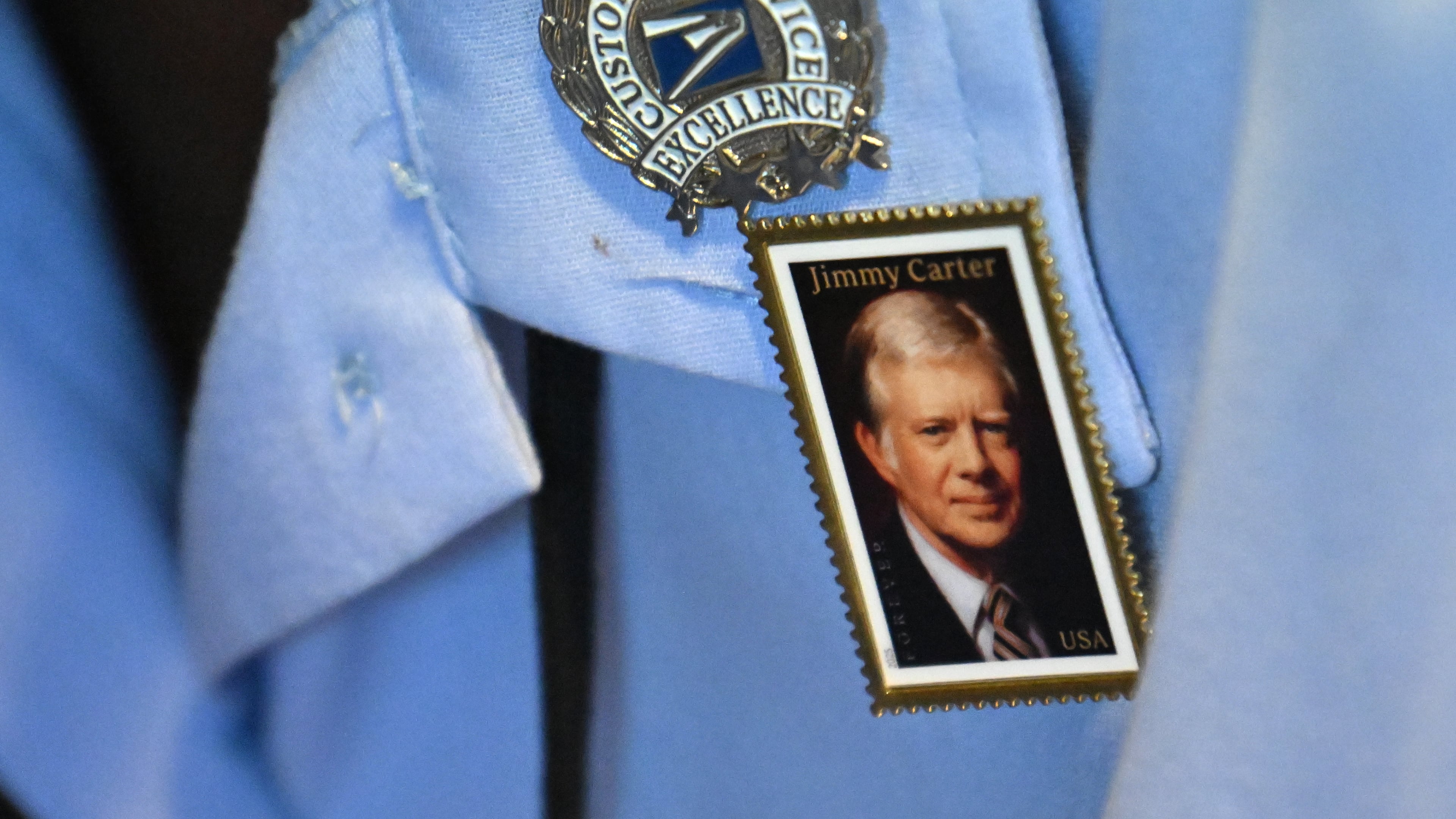
Near the Bible on his desk at the Carter Center, former President Jimmy Carter kept a clear plastic jar that reminded him of his mission.
Preserved in liquid inside the jar was a guinea worm: a long, coiled specimen of a creature that has caused immeasurable suffering for thousands of years.
Carter spent nearly four decades, most of his eventful post-presidency, leading an effort to end guinea worm infections in humans. He lived almost long enough to see the disease eradicated. In 1986, almost 3.5 million cases were reported. So far this year, there have been only four.
Carter, who died Dec. 29, would have turned 101 on Wednesday.
In his grandfather’s office on Wednesday morning, former state Sen. Jason Carter picked up the worm jar and showed it to a visitor. It was a busy day at the nonprofit Carter Center. “The President and the Dragon,” a documentary about the long battle against guinea worms, had just been released. And down the hall in about an hour, the U.S. Postal Service would unveil a new “forever” stamp bearing Carter’s image. It seemed like a good time to think about Carter’s life, and the mark he left on the world.
Jason Carter wore a dark suit as he guided a tour around the Atlanta office, whose panoramic window looked out on a green pond and a cool October morning. He was talking about serious things: a 1979 visit from Chinese Vice Premier Deng Xiaoping, a negotiated ceasefire in Sudan that allowed humans to attack the guinea worm instead. And then Jason Carter started talking about baseball.
Jimmy Carter loved baseball, and loved the Braves. Not just the old Braves, either. He remained a fan in his later days, and liked Austin Riley, and kept a Ronald Acuña action figure, and was happy to be shown kissing his wife, Rosalynn Carter, on the Kiss Cam in 2015.
“I mean, he’s a current fan,” his grandson said, roughly nine months after the president’s death.
A reporter asked Jason Carter about his use of the present tense. Carter thought about that.
“I mean, he’s still here in a lot of ways,” the grandson said.
Indeed, Jimmy Carter’s presence still felt tangible. There were the paintings inside, the statue outside. Across the Atlantic Ocean, his work continued. Adam Weiss, director of the Guinea Worm Eradication Program, said the Carter Center has close to 2,500 staff members and 30,000 volunteers still working in Africa to wipe out the guinea worm. The center’s workers were also fighting other diseases, including river blindness and lymphatic filariasis.
Weiss sat in an office Wednesday morning, wearing a beaded necklace that held a wide black straw. The straw contained a tiny stainless-steel mesh filter. The filter allowed people in remote African villages to drink water without also drinking the tiny crustaceans that could infect them with guinea-worm larvae and cause unbearable pain. This was a visible part of Carter’s legacy: reducing the sum total of human suffering.
Over in the chapel, people gathered for the ceremony. There were donors and staff members and family friends and stamp enthusiasts and members of the so-called Peanut Brigade who helped Carter win the election in 1976. As the Georgia State Patrol Honor Guard walked toward the front of the room, a bagpiper played “Anchors Aweigh” — the fight song of the U.S. Naval Academy, where James Earl Carter graduated with distinction in 1946.
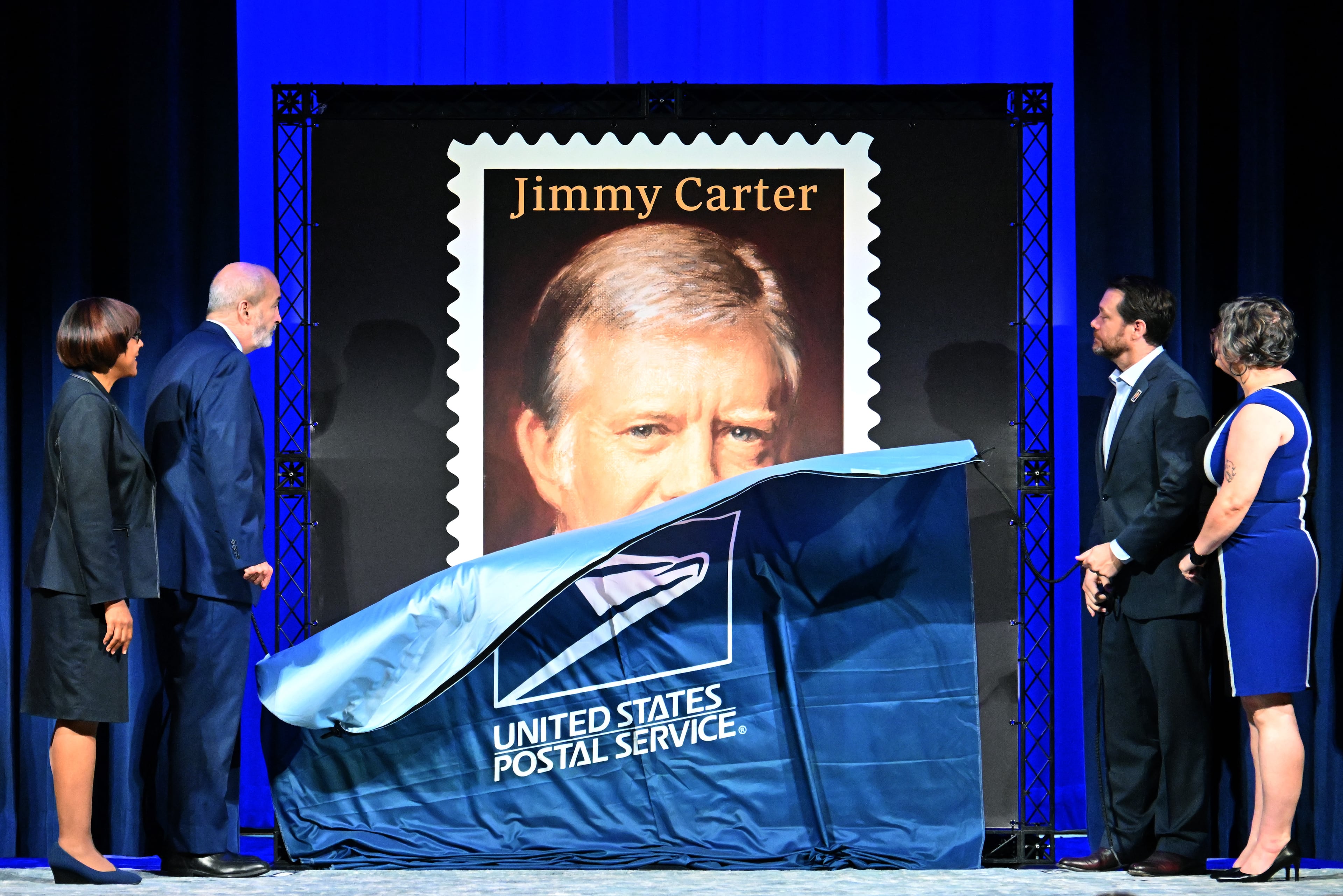
It was a short ceremony, barely half an hour. Jason Carter pulled a cord. The veil fell to the stage. A colossal stamp appeared. There was the former president, in a replica of a 1982 oil painting by Herbert Abrams. The stamp said “FOREVER.”
In Carter’s office, the King James Bible spoke of humans coming from the dust and then returning to that dust. About 140 miles to the south, Jimmy and Rosalynn Carter are laying in their graves. Jason Carter thought about his grandfather’s humble beginnings in Plains, and how growing up in the undeveloped rural South prepared him for his work in undeveloped rural Africa. He saw the image of God in other humans, no matter their race or their politics.
After the ceremony, former Carter Center CEO John Hardman was asked about Carter’s work.
“His work is never finished,” Hardman said.
Carter found a way to keep it going.
As people lined up to get their pictures taken with the giant stamp, another grandson stood near the stage and reminisced.
Josh Carter fondly remembered working with his grandfather in the wood shop when he was a boy. First it was small tasks, like holding the end of a tape measure. They built a four-poster bed together.
Two or three years before he died, the former president called his grandson and offered to give him his woodworking tools. There were two conditions attached to this offer: Josh Carter had to use the tools, and he had to come and get them right away.
Josh accepted the offer. He took his grandfather’s workbench, table saw, chisels, hand planes. And he built a cabinet out of cherry wood.
Jimmy Carter lived 100 years, almost 44 of them after his presidency. He kept holding on, holding on, hoping to outlive the last guinea worm.
“He didn’t quite make it, but he got really close,” Josh Carter said by phone Wednesday afternoon. “So we’re gonna finish the job.”
